2023
Meister, J. C. (2023a). From TACT to CATMA or A mindful approach to text annotation and analysis. In J. Nyhan, G. Rockwell, S. Sinclair, & A. Ortolja-Baird (Eds.), On Making in the Digital Humanities: Essays on the Scholarship of Digital Humanities Development in Honour of John Bradley. UCL Press. https://www.uclpress.co.uk/products/211148
Meister, J. C. (2023b). Poetry, Phenomenon and Phenomenology. In A.-S. Bories, P. Plechác, & P. R. Fabo (Eds.), Computational Stylistics in Poetry, Prose, and Drama (pp. 37–66). De Gruyter. https://doi.org/10.1515/9783110781502-003
2022
Andresen, M. (2022). Annotation: A Uniting, but Multifaceted Practice. A Review of Nantke and Schlupkothen (2020). Digital Humanities Quarterly, 16(4). https://www.proquest.com/docview/2758549592/abstract/CCE535A1A86B4EF8PQ/1
Flüh, M., Horstmann, J., & Schumacher, M. (2022). Genderaspekte in Fantasy-Jugendromanen von 2008 bis 2020: Distant Gender Reading. In W. Willms (Ed.), Gender in der deutschsprachigen Kinder- und Jugendliteratur (pp. 457–482). De Gruyter. https://doi.org/10.1515/9783110726404-025
Healy, J., Levell, J., & Cole, T. (2022). An intersectional analysis of domestic abuse perpetrator service adaptation during COVID-19: findings from the UK, Cyprus, Greece, Italy, Romania. Journal of Gender-Based Violence, 6(2), 348–363. https://doi.org/10.1332/239868021X16425822261273
Markewitz, F., Schuster, B.-M., & Schröder, S. (2022). Guidelines Hetwik 07 2021 Endfassung.
Nunn, C. A. (2022). Das Thema patristischer Ethik – Versuch einer Annäherung durch Distanz am Beispiel der Briefe des Augustinus von Hippo. Journal of Ethics in Antiquity and Christianity, 4, 31–51. https://doi.org/10.25784/jeac.v4i0.1011
Schumacher, M. (2022). Orte und Räume im Roman. Metzler. https://doi.org/10.1007/978-3-662-66035-5
Tahoun, R. (2022). Die Germanistik in Ägypten um die mediterrane Literatur erweitert. Eine Reform im Rahmen der nachhaltigen Bildung. In L. Auteri, N. Barrale, A. Di Bella, & S. Hoffmann, Jahrbuch für Internationale Germanistik. Wege der Germanistik in transkultureller Perspektive (pp. 551–560). Peter Lang.
Vagelatos, A., Gavrielidou, M., Fountana, M., Papadopoulos, S., Galani, A., & Mantzari, E. (2022). Designing digital educational games based on literary texts: the educational aspect.
Vagelatos, A., Papadopoulos, S., & Farandouris, P. (2022). Design principles for the development of a digital educational escape game based on literary texts.
Winkelsträter, S. (2022). Von der Scholie zum Chat. Digitale Tristan-Lektüren im akademischen Unterricht. In Akademisches Lesen (Vol. 5, pp. 169–192). V&R unipress. https://doi.org/10.14220/9783737013970.169
2021
Abu-Rabiah, E. (2021). First language, second language: Linguistic differences between writers, seen through a microscope שפת-אם, שפה שנייה: הבדלים לשוניים בין סופרים במבט מיקרוסקופי. https://doi.org/10.13140/RG.2.2.26859.67364
Arhire, M. (2021). Roy Youdale: Using Computers in the Translation of Literary Style: Challenges and Opportunities. Acta Universitatis Sapientiae, Philologica, 13(3), 121–126. https://www.ceeol.com/search/article-detail?id=1020584
Flüh, M. (2021). Christoph Martin Wieland und die Rezeptionspraxis des 18. und 19. Jahrhunderts. Digitale literaturwissenschaftliche Rekonstruktion von Wertungskriterien aus der ›Allgemeinen-Literatur Zeitung”. In K. Manger (Ed.), Wieland-Studien 11 | Wieland-Forschungszentrum. http://wielandforschung.de/wieland-studien-11/
Frey-Endres, M., & Simon, T. (2021). Digitale Werkzeuge zur textbasierten Annotation, Korpusanalyse und Netzwerkanalyse in den Geisteswissenschaften (S. Bartsch, E. Gius, M. Müller, A. Rapp, & T. Weitin, Eds.; Vol. 2). https://tuprints.ulb.tu-darmstadt.de/17850/
Grafe, M. (2021). Treating the Digital Disease: The Role of Digital and Physical Primary Sources in Undergraduate Teaching | Grafe | RBM: A Journal of Rare Books, Manuscripts, and Cultural Heritage. https://doi.org/https://doi.org/10.5860/rbm.22.1.25
Kearns, E. (2021). Annotation Guidelines For narrative levels, time features, and subjective narration styles in fiction (SANTA 2). Journal of Cultural Analytics, 6. https://doi.org/10.22148/001c.30699
König, N. (2021). Verstehen sichtbar machen – Texterschließung durch digitale Annotationswerkzeuge kollaborativ anbahnen. MiDU – Medien im Deutschunterricht, 1–16. https://doi.org/10.18716/ojs/midu/2021.0.3
Köstlbauer, J. (2021). Claiming a Runaway Slave in the Holy Roman Empire: The Case of Samuel Johannes (1754). https://doi.org/10.26092/elib/1482
Mouratoglou, N., Agapoglou, T., Bikos, K., & Tsioumis, K. (2021). Exploring the Social Representations of Roma in Online Hate Speech: findings from a preliminary study. Συνέδρια της Ελληνικής Επιστημονικής Ένωσης Τεχνολογιών Πληροφορίας & Επικοινωνιών στην Εκπαίδευση, 385–392. https://eproceedings.epublishing.ekt.gr/index.php/cetpe/article/view/3771
Thielert, F., Schuster, B.-M., & Haaf, S. (2021). DIE EVOLUTION VON KOMPLEXEN TEXTMUSTERN Tagset und Guidelines für die sprachpragmatische Annotation historischer Pressetexte in CATMA. https://www.uni-paderborn.de/fileadmin/tevo/images_and_files/Guidelines_AZ_2021_08.pdf
Zumrík, M. (2021). CATMA – Digitálny nástroj na anotáciu, analýzu a vizualizáciu literárnych textov. 67, 614–629. https://doi.org/10.31577/slovlit.2020.67.6.7
מינץ־מנור, א., & Münz-Manor, O. (2021). פיוט אנלוגי בעולם דיגיטלי – Analog Piyyut in a Digital World: לקראת מחקר ממוחשב של ספרות הפיוט. Jerusalem Studies in Hebrew Literature / מחקרי ירושלים בספרות עברית, לב, 69–98. https://www.jstor.org/stable/27075100
2020
Becker, M., Bender, M., & Müller, M. (2020). Classifying heuristic textual practices in academic discourse: A deep learning approach to pragmatics. International Journal of Corpus Linguistics, 25(4), 426–460. https://doi.org/10.1075/ijcl.19097.bec
Escobar, M. dos S., Chervenski, A. S., & Bordin, A. S. (2020). Open Coding Tool: Uma Ferramenta de Codificação Colaborativa para Análise de Dados Qualitativos. Anais da Escola Regional de Engenharia de Software (ERES), 174–183. https://doi.org/10.5753/eres.2020.13728
Grafe, M., Hirsch, D., Landis, B., & Powell, S. (2020). Support Services at Yale University for Teaching with Primary Sources: An Exploration of Instructor Rationales and Needs. Library Staff Publications. https://elischolar.library.yale.edu/yul_staff/13
Horstmann, J. (2020a). Textvisualisierung: Epistemik des Bildlichen im Digitalen. http://publikationen.ub.uni-frankfurt.de/frontdoor/index/index/docId/54861
Horstmann, J. (2020b). Undogmatic Literary Annotation with CATMA. In Annotations in Scholarly Editions and Research (pp. 157–176). deGruyter. https://doi.org/10.1515/9783110689112-008
Schorr, M., Mishali, O., Kimelfeld, B., & Münz-Manor, O. (2020). ViS-Á-ViS : Detecting Similar Patterns in Annotated Literary Text. https://doi.org/10.48550/ARXIV.2009.02063
Williams, A. (2020). How Teachers and Counselors Collaborate Formally and Informally to Improve the Precollege Curriculum. Walden Dissertations and Doctoral Studies. https://scholarworks.waldenu.edu/dissertations/9304
2019
Birnbaum, D. J., Bories, A.-S., Haider, T. N., & Sarv, M. (2019). Plotting Poetry 3. Conference report. Studia Metrica et Poetica, 6(2), 150–161. https://doi.org/10.12697/smp.2019.6.2.05
Castel, G. (2019). Humanités numériques et études anglophones : Comprendre et explorer. Miranda. Revue pluridisciplinaire du monde anglophone / Multidisciplinary peer-reviewed journal on the English-speaking world, 19. https://doi.org/10.4000/miranda.20477
Ewing, K. (2019). Beyond Dewey: Creating an LGBTQ+ Classification System at the LGBTQ Center of Durham. In B. Mehra (Ed.), LGBTQ+ Librarianship in the 21st Century: Emerging Directions of Advocacy and Community Engagement in Diverse Information Environments (Vol. 45, pp. 225–242). Emerald Publishing Limited. https://doi.org/10.1108/S0065-283020190000045017
forTEXT & CATMA. (2019a). Tutorial: CATMA 6 zur digitalen Annotation nutzen [YouTube Tutorial]. https://www.youtube.com/watch?v=d5yxE0Qu2Dw
forTEXT & CATMA. (2019b). Tutorial: Projektmanagement in CATMA 6 [YouTube Tutorial]. https://www.youtube.com/watch?v=agywc1hV0U4
Horstmann, J. (2019). Manuelle Annotation mit CATMA. ForTEXT. Literatur Digital Erforschen. https://fortext.net/routinen/lerneinheiten/manuelle-annotation-mit-catma
Kaden, B., & Kleineberg, M. (2019). Scholarly Makerspaces – Ein Zwischenbericht zum DFG-Projekt FuReSH. https://doi.org/10.18452/20331
Kulak, A. M. (2019). Rhetoric Beyond the Digital/Physical Divide: The Internet and Digital and Physical Hybridity. https://vtechworks.lib.vt.edu/handle/10919/89488
Meister, J. C., Horstmann, J., Petris, M., Jacke, J., Bruck, C., Schumacher, M., & Flüh, M. (2019). CATMA. Computer Assisted Text Markup and Analysis. https://catma.de
Neves, M., & Ševa, J. (2019). An extensive review of tools for manual annotation of documents. Briefings in Bioinformatics, 22. https://doi.org/10.1093/bib/bbz130
Schmidt, T., Winterl, B., Maul, M., Schark, A., Vladand, A., & Wolff, C. (2019). Inter-Rater Agreement and Usability: A Comparative Evaluation of Annotation Tools for Sentiment Annotation. INFORMATIK 2019 Workshops,Lecture Notes in Informatics (LNI), Gesellschaft Für Informatik, 121–133. https://dl.gi.de/bitstream/handle/20.500.12116/25044/paper03_05.pdf?sequence=1
Schumacher, M. (2019). CATMA. ForTEXT. Literatur Digital Erforschen. https://fortext.net/tools/tools/catma
Sterle, J. (2019). The Language of Appraisals in Articles About Ice Hockey [Thesis]. Univerza v Mariboru, Filozofska fakulteta. https://dk.um.si/IzpisGradiva.php?id=73472
Youdale, R. (2019). Using Computers in the Translation of Literary Style: Challenges and Opportunities. https://doi.org/10.4324/9780429030345
2018
Bailini, S., & Frigerio, A. (2018). CORESPI e CORITE, due nuovi strumenti per l’analisi dell’interlingua di lingue affini. CHIMERA: Revista de Corpus de Lenguas Romances y Estudios Lingüísticos, 5(2), 313–319. https://doi.org/10.15366/chimera2018.5.2.010
Dimpel, F. M. (2018). Narratologische Textauszeichnung in Märe und Novelle. de Gruyter. https://www.degruyter.com/downloadpdf/books/9783110523300/9783110523300-006/9783110523300-006.pdf
Drucker, J. (2018). Non-representational approaches to modeling interpretation in a graphical environment. Digital Scholarship in the Humanities, 33(2), 248–263.
Stover, T. (2018). A Case Study of Teachers Implementing The Framework for 21st-Century Learning. Walden Dissertations and Doctoral Studies. https://scholarworks.waldenu.edu/dissertations/4759
2017
Balzer, E. (2017). Die Konstruktion von Rede und mentalen Prozessen in Alfred Döblins “Die Ermordung einer Butterblume”. Eine erzähltechnische Analyse mithilfe von CATMA. GRIN Verlag.
Branney, P., Strickland, C., Darby, F., White, L., & Jain, S. (2017). Exploring Men’s Experiences of Diagnosis and Treatment for Prostate Cancer. In J. Brooks & N. King, Applied Qualitative Research in Psychology. Bloomsbury Publishing.
Daniel D. Dasig, J., Tadeo, C., Sabado, D., Cervantes, M. E., Mansueto, M., Pahayahay, A. B., Asejo, N. R., Pangan, S. M., Sicat, E., & Traballo, R. (2017). Application of Participatory Research Model in the College Research and Development Program. International Journal of Business and Economic Affairs, 2(2). http://www.ijbea.com/ojs/index.php/ijbea/article/view/61
Demeter, M. (2017). The Core-Periphery Problem in Communication Research: A Network Analysis of Leading Publication. Publishing Research Quarterly, 33. https://doi.org/10.1007/s12109-017-9535-2
Dimpel, F. M. (2017). Novellenschätze narratologisch auszeichnen und analysieren am Beispiel Victor von Scheffels Hugideo und der sozialen Netzwerkanalyse. Z Literaturwiss Linguistik, 47, 87–108. https://library.unej.ac.id/repository/Novellenschatze_narratologisch_auszeichnen_und_analysieren_am_Beispiel_Victor_von_Scheffels_Hugideo_und_der_sozialen_Netzwerkanalyse0A.pdf
Gius, E., & Jacke, J. (2017). The Hermeneutic Profit of Annotation: On Preventing and Fostering Disagreement in Literary Analysis. International Journal of Humanities and Arts Computing, 11(2), 233–254. https://doi.org/10.3366/ijhac.2017.0194
Hart, T., & Achterman, P. (2017). Qualitative Analysis Software. In The International Encyclopedia of Communication Research Methods (pp. 1–12). John Wiley & Sons, Ltd. https://doi.org/10.1002/9781118901731.iecrm0194
Lindberg, J. (2017). Happy Ending för nybörjare : En netnografisk studie om ett sexköpsforum. http://urn.kb.se/resolve?urn=urn:nbn:se:su:diva-143675
Marnšek, U., & Onič, T. (2017). Davies’ “Orchestra” in the Celestial Dance with Slovene Culture. In V. Kennedy, Ethnic and Cultural Identity in Music and Song Lyrics. Cambridge Scholars Publishing.
Ramos, V. F. C., & Smaniotto Júnior, C. (2017). SoNDA: Um software para apoio à análise qualitativa de postagens de redes sociais. https://repositorio.ufsc.br/xmlui/handle/123456789/177717
2016
Bögel, T., Gius, E., Petris, M., & Strötgen, J. (2016, March). CATMA – Eine Plattform zum kollaborativen und automatisierten Annotieren und Analysieren von Texten. DHd: Digital Humanities im deutschsprachigen Raum, Leipzig.
Bröer, C., Moerman, G., Wester, J. C., Malamud, L. R., Schmidt, L., Stoopendaal, A., Kruiderink, N., Hansen, C., & Sjølie, H. (2016). Open Online Research: Developing Software and Method for Collaborative Interpretation. Forum Qualitative Sozialforschung / Forum: Qualitative Social Research, 17(3). https://doi.org/10.17169/fqs-17.3.2388
Gius, E., & Jacke, J. (2016). Zur Annotation narratologischer Kategorien der Zeit. Guidelines zur Nutzung des CATMA-Tagsets. http://heureclea.de/wp-content/uploads/2016/11/guidelinesV2.pdf
Hwang, B.-N., Chen, T.-T., & Lin, J. T. (2016). 3PL selection criteria in integrated circuit manufacturing industry in Taiwan. Supply Chain Management: An International Journal, 21(1), 103–124. https://doi.org/10.1108/SCM-03-2014-0089
Lagoni, F. (2016). Fiktionales versus faktuales Erzählen. De Gruyter.
Lahn, S., & Meister, J. C. (2016). Weitere Themenfelder der narratologischen Analyse. In S. Lahn & J. C. Meister (Eds.), Einführung in die Erzähltextanalyse (pp. 259–293). J.B. Metzler. https://doi.org/10.1007/978-3-476-05415-9_5
Schumacher, M. (2016). Explaining Events to Computers: Critical Quantification, Multiplicity and Narratives in Cultural Heritage. Digital Humanities Quarterly, 10(3). https://kclpure.kcl.ac.uk/portal/files/117450140/Explaining_Events_to_Computers.pdf
Sharma, N., Khatri, S., & Kamlanabhan, T. J. (2016). Internalizing Citizenship Behaviour through Internal Communication among Indian Public Services Employees.
Strötgen, J. (2016). Einführung in CATMA. https://people.mpi-inf.mpg.de/~jstroetge/talks/dhd2016-catma-tutorial-erste-schritte.pdf
2015
Bögel, T., Petris, M., Strötgen, J., & Gertz, M. (2015, February). An End-To-End Integration of Automatic Annotations into CATMA. DHd: Von Daten zu Erkenntnissen, Graz. https://dbs.ifi.uni-heidelberg.de/files/Team/jannik/publications/BoegelEtAl2015_dhd-poster-abstract.pdf
Gius, E. (2015). Erzählen über Konflikte: Ein Beitrag zur digitalen Narratologie (Vol. 46). De Gruyter.
Revellio, M. (2015). Classics and the Digital Age. Advantages and limitations of digital text analysis in classical philology. Digital Humanities Cooperation. https://www.digitalhumanitiescooperation.de/pamphlete/pamphlet-2-classics-and-the-digital-age/
Schüch, L. (2015). Computerphilologische Analyse. „Tagging in a huge meadow of time“ – Analysen der Zeit in Erzähltexten mit Hilfe des Programms CATMA. In A. Weixler & L. Werner (Eds.), Zeiten erzählen. Ansätze – Aspekte – Analysen (pp. 27–52). de Gruyter.
Weitin, T. (2015). Thinking slowly : Literatur lesen unter dem Eindruck von Big Data [WORKINGPAPER]. https://kops.uni-konstanz.de/handle/123456789/30686
2013
Jacke, J. (2013). CATMA 4 Manual. http://catma.de/wp-content/uploads/2017/05/catma4_manual.pdf
Meister, J. C. (2013). Toward a Computational Narratology. In M. Agosti & F. Tomasi (Eds.), Collaborative Research Practices and Shared Infrastructures for Humanities Computing (pp. 17–36).
Sullivan, D. (2013). Tech Services on the Web: CATMA: Computer Aided Textual Markup & Analysis; http://www.catma.de/. Technical Services Quarterly, 30(3), 337–338. https://doi.org/10.1080/07317131.2013.788370
2012
Buzzetti, D., & Thaller, M. (2012). Beyond Embedded Markup. International Conference on Digital Humanities, Hamburg. https://www.semanticscholar.org/paper/Beyond-Embedded-Markup-Buzzetti-Thaller/1d87c86191a5201441efb17d034071caf569173c
Opas-Hänninen, L. L., Hettel, J., Toljamo, T., & Seppänen, T. (2012). ‘Eric, you do not humble well’: The Image of the Modern Vampire in Text and on Screen. 309–310. https://d-nb.info/1024470199/34#page=342
Petris, M., Gius, E., Schüch, L., & Meister, J. C. (2012, June). Crowdsourcing meaning: a hands-on introduction to CLÉA, the Collaborative Literature Éxploration and Annotation Environment. DHd: Digital Humanities im deutschsprachigen Raum, Hamburg. https://www-archiv.fdm.uni-hamburg.de/dh2012/conference/programme/abstracts/crowdsourcing-meaning-a-hands-on-introduction-to-clea-the-collaborative-literature-exploration-and-annotation-environment.html
Schmidt, D. (2012). The Role of Markup in the Digital Humanities. Historical Social Research / Historische Sozialforschung, 37(3 (141)), 125–146. https://www.jstor.org/stable/41636601
Siemens, R., Dobson, T., Ruecker, S., Cunningham, R., Galey, A., Warwick, C., Siemens, L., Best, M., Chernyk, M., Duff, W., Flanders, J., Gants, D., Gervais, B., MacLean, K., Ramsay, S., Rockwell, G., Susan, S., Colin, S., Christian, V., … Vika, Z. (2012). Human–Computer Interface/Interaction and the Book: A Consultation-derived Perspective on Foundational E-Book Research. In Collaborative Research in the Digital Humanities. Routledge.
2010
Petris, M. (2010). CATMA. Software-Wiki. https://software.fandom.com/de/wiki/CATMA
Schüch, L. (2010). CATMA User Manual for CATMA 3.0. http://catma.de/webarchive/catma-4.0/webfm_send/7
n.d.
Gius, E., Jacke, J., Meister, J. C., & Petris, M. (n.d.). CATMA (Computer Aided Textual Markup and Analysis) – ein Tool für die hermeneutische Textanalyse. CLARIN-D. https://www.clarin-d.net/de/konferenz-abstracts/380-catma-computer-aided-textual-markup-and-analysis-ein-tool-fuer-die-hermeneutische-textanalyse
Wille, M., Menke, P., Wilk, N. M., Holtfreter, S., & Kreuz, C. D. (n.d.). CATMA. LinguTools. Gängige Annotations- Und Korpusanalysetools in Der Linguistik. https://blogs.uni-paderborn.de/lingutools/catma/








